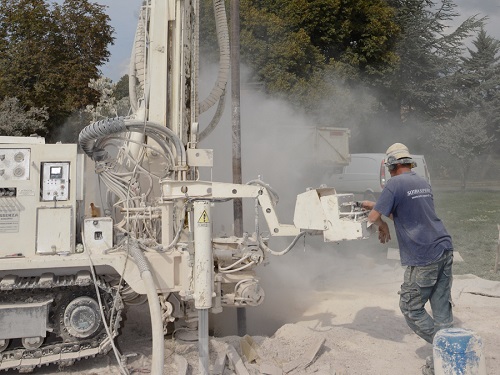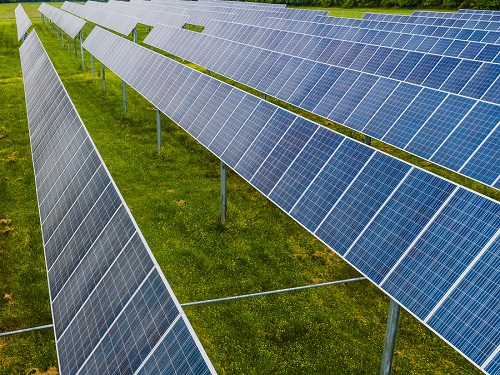A new study has shown that using underground water to maintain comfortable temperatures could reduce consumption of natural gas and electricity in this sector by 40 per cent, thereby offering a green heating and cooling solution.
The Issue
With a massive 12 per cent of the total global energy demand coming from heating and cooling homes and businesses, finding a green way to meet this demand could be a major step forward in reducing the consumption of natural gas and electricity, thereby helping the environment.
The Solution – ATES?
One green method for meeting this demand could be using aquifer thermal energy storage (ATES).
ATES is a sustainable technology that utilises the subsurface temperature differences of groundwater to store thermal energy for heating and cooling purposes e.g., for heating and cooling buildings. This technique involves extracting groundwater from a shallow or deep aquifer, passing it through a heat exchanger system to extract heat or coolness, and then reinjecting the water back into the same or another aquifer.
During the summer season, the warm water from the building’s cooling system is transferred to the cold groundwater and then re-injected into the ground. In the winter season, the process is reversed, where the heat stored in the groundwater is extracted to provide warmth to the building.
Highly Efficient & Cost-Effective
ATES is a highly energy-efficient and cost-effective technology for space heating and cooling, which results in lower greenhouse gas emissions compared to conventional HVAC systems. ATES can be used in a variety of applications, including residential, commercial, and industrial buildings. It is also suitable for district heating and cooling systems, which can serve a large number of buildings in an area.
The Study
The study, published in Applied Energy, looks at how ATES could fit into the larger goal of decarbonising U.S. energy systems by storing intermittent renewable energy which could be used when the sun isn’t shining, and the turbines aren’t spinning. In the study, researchers built a technological and economic simulation of an energy system. The study’s authors found that ATES is an option for heating and cooling energy storage that, like batteries, could help end human reliance on fossil fuel-derived backup power and enable a fully renewable grid.
Simple But Effective
The ATES concept is simple because it uses the existing natural heat-absorbing property of water and the natural geological features. ATES involves the process of pumping water up from existing underground reservoirs, heating it at the surface in the summer with environmental heat or excess energy from solar, or any time of the year with wind, and then pumping back down, ready to use the stored heat in the colder months.
How Effective Are Underground Aquafers At Storing Heat?
Underground aquifers are highly effective at storing heat because they have a large thermal mass, which means they can store a significant amount of heat energy. Aquifers are typically made up of porous rock or soil layers that can absorb and store water, which can be used to store thermal energy.
That said, the effectiveness of underground aquifers at storing heat depends on several factors, such as the depth and size of the aquifer, the properties of the soil or rock layers, and the flow rate of groundwater.
The Deeper The Better
Deep aquifers are more effective at storing heat than shallow aquifers because the temperature of the water is more stable at greater depths, although it could be said that the earth is generally a good insulator.
All things considered, underground aquifers are an excellent and highly effective method for storing heat energy, which can help to reduce energy costs and greenhouse gas emissions associated with heating and cooling buildings.
A Relatively High-Cost Method
The study showed that adding ATES to the grid could reduce consumption of petroleum products by up to 40 per cent. However, using ATES could cost 15 to 20 per cent more than existing energy storage technologies.
Other Benefits
Other benefits of using ATES could include:
– Unlike above-ground tank-based water or ice storage systems ATES doesn’t need to take up space.
– Compared with traditional geothermal heat pump systems that rely on heat transfer with the underground earth soil, ATES is more efficient and can be more easily scaled up for large community cooling or heating.
– ATES has the potential to become more efficient as weather becomes more extreme in the coming years due to climate change.
– ATES could make the future grid more resilient to outages caused by high power demands during heat waves because ATES-driven cooling needs less electricity than air conditioners, and it only needs enough power to pump the water around.
What Does This Mean For Your Organisation?
Although more expensive than existing energy storage technologies, ATES offers businesses a natural, green way to heat and cool buildings that actually takes advantage of current climate change temperature extremes e.g., supercharging the amount of free thermal energy that can be stored. Using ATES could also make future grid more resilient to outages caused by high power demands during heat waves, thereby causing less disruption to businesses. Combine these points with the fact that ATES is efficient and can relatively easily scaled up and it’s clear that ATES could offer a greener, realistic alternative to conventional HVAC systems in the future.





